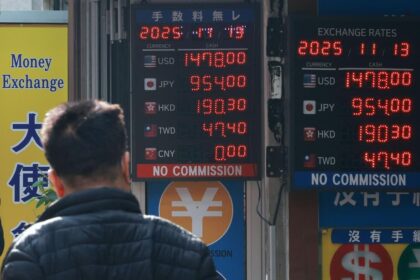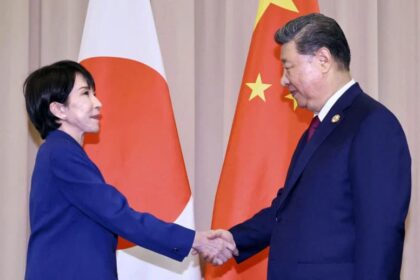China’s Retreat from US Treasuries: A New Era in Global Finance?
China, once the world’s second-largest foreign holder of US Treasury bonds, has been steadily reducing its exposure to American government debt. This trend, which has accelerated in recent years, is raising questions about the future of global finance, the stability of US debt markets, and the evolving economic rivalry between the world’s two largest economies. As China’s holdings fall to their lowest levels since 2009, analysts and policymakers are watching closely for the broader implications.
Why Is China Selling US Treasuries?
The reduction in China’s US Treasury holdings is not a sudden move, but rather the continuation of a long-term strategy. According to data from the US Treasury Department, China’s holdings dropped to $756.3 billion in May 2025, the lowest since February 2009 and a sharp decline from its peak of over $1.3 trillion between 2012 and 2016. This marks the third consecutive month of reductions, and China has now slipped to the third-largest foreign holder of US Treasuries, behind Japan and the United Kingdom.
Several factors are driving this shift:
- Economic and Trade Tensions: The ongoing trade disputes between the US and China, including escalating tariffs and retaliatory measures, have increased uncertainty and volatility in global markets. China’s gradual reduction in US Treasury holdings is partly a response to these tensions, as it seeks to diversify its foreign exchange reserves and reduce reliance on the US dollar.
- Supporting the Yuan: As China’s economy faces headwinds from a post-COVID slowdown and reduced dollar inflows from exports, the government has been selling Treasuries to support its currency, the yuan. A weaker yuan could trigger capital flight and further destabilize China’s financial system, so maintaining currency stability is a top priority.
- Reserve Diversification: China is actively diversifying its reserves, increasing its holdings of gold and other strategic assets. In May 2025, China expanded its gold reserves for the seventh consecutive month, reaching 73.83 million ounces. This shift is seen as a hedge against global volatility and a move toward a more multipolar monetary system.
- US Fiscal Concerns: The rapid expansion of US government debt, which recently surpassed $34 trillion, has raised concerns about the long-term sustainability of American fiscal policy. Chinese researchers and officials have warned that persistent budget and trade deficits, coupled with political uncertainty, could undermine the credibility of US Treasuries as a “rock solid” investment.
Expert Perspectives on China’s Strategy
Financial analysts emphasize that China’s approach is measured and strategic, rather than abrupt or confrontational. Mark Cabana, a rates strategist at Bank of America Securities, notes that demand from traditional foreign buyers like China and Japan has diminished, with private investors increasingly filling the gap. Deutsche Bank’s George Saravelos suggests that US policies, especially tariff escalations, are inadvertently encouraging the sell-off of US Treasuries by major foreign investors.
However, experts caution against the idea that China is “weaponizing” its Treasury holdings. The Mercator Institute for China Studies (MERICS) argues that a sudden, large-scale sell-off would hurt China as much as the US, by devaluing its remaining reserves and potentially triggering a global financial crisis. Instead, China’s gradual reduction is aimed at supporting its own currency and managing risk, rather than destabilizing US markets.
How Has the Global Treasury Market Responded?
Despite China’s reductions, total foreign holdings of US Treasuries have continued to rise, reaching over $9 trillion in May 2025—a record high. Other countries, particularly Japan and the UK, have increased their purchases. The UK’s holdings surged to $809.4 billion, surpassing China for the first time since 2000. Japan remains the largest foreign holder, with $1.135 trillion in US government debt.
This shift reflects broader changes in global capital flows. The UK’s increased holdings are often attributed to London’s role as a global financial hub, serving as a custodian for hedge funds and other institutional investors. Meanwhile, Canadian and European investors have also ramped up their purchases, reversing earlier outflows triggered by US tariff policies.
Market volatility has increased, particularly after major policy announcements and credit rating changes. In April 2025, Moody’s downgraded the US sovereign credit rating from Aaa to Aa1, citing rising government debt and interest payments. This move sent yields on Treasury bonds higher and contributed to a sharp sell-off, especially in long-dated bonds. However, the fundamental drivers of Treasury yields remain the US macroeconomic outlook and Federal Reserve policy, with trade and geopolitical risks adding layers of uncertainty.
China’s Portfolio: Short-Term vs. Long-Term Treasuries
Another notable trend is China’s shift toward holding more short-term Treasury bills, which are more liquid and can be sold quickly in times of crisis. Industry experts point out that this strategy allows China to maintain flexibility while reducing exposure to long-term US fiscal risks. At the same time, China has increased its allocation to other assets, such as US agency bonds and gold, further diversifying its reserve portfolio.
What Are the Risks and Implications?
The gradual reduction of China’s US Treasury holdings carries significant implications for both countries and the global financial system.
- For the US: Reduced demand from a major creditor like China could put upward pressure on US borrowing costs, especially if other foreign buyers do not fully compensate. However, so far, private investors and other countries have stepped in to fill the gap. The US Federal Reserve could also intervene by purchasing Treasuries if necessary to stabilize markets.
- For China: Selling Treasuries too quickly could backfire by devaluing its remaining holdings and destabilizing global markets. China’s measured approach aims to balance risk management with the need to support its currency and diversify reserves.
- For Global Markets: The shift toward a more multipolar monetary system, with greater reliance on assets like gold and non-dollar currencies, could reduce the dominance of the US dollar over time. This transition is likely to be gradual, but it reflects deeper changes in the global economic order.
Could China “Weaponize” Its Treasury Holdings?
The idea that China could use its vast holdings of US debt as a “nuclear option” in economic disputes has long been debated. In theory, a massive sell-off could destabilize US financial markets and drive up borrowing costs. In practice, however, such a move would also inflict significant losses on China and risk triggering a global crisis.
As analysts at MERICS explain, “China’s gradual sale of US Treasuries is mainly to keep the yuan stable as the trade dispute prompts investors to move funds elsewhere. If China continues this path, the US Federal Reserve could buy the bonds to keep markets steady, but the dollar would weaken as China shifts to other countries’ bonds.”
Most experts agree that China’s current strategy is to quietly reduce its exposure while avoiding market disruptions. This approach allows China to manage its own risks without provoking a financial confrontation.
What’s Next for US-China Financial Relations?
The evolving dynamics of US-China financial relations are likely to remain a key focus for global markets. Trade negotiations between the two countries remain stalled, with both sides imposing high tariffs and restricting access to strategic sectors. China has retaliated by reducing agricultural imports from the US, restricting rare earth exports, and investigating American firms. The US, for its part, has imposed export restrictions on advanced technologies like semiconductors.
These tensions have increased market volatility and underscored the importance of portfolio diversification for investors. As the world’s two largest economies continue to decouple in certain areas, the global financial system is adapting to new realities.
Long-Term Trends: Toward a Multipolar Monetary System?
China’s gradual reduction in US Treasury holdings is part of a broader trend toward reserve diversification and a more multipolar monetary system. By increasing its gold reserves and investing in other currencies, China is seeking to reduce its vulnerability to US financial and political pressures. This shift is echoed by other countries, as global trade and investment flows become more diversified.
While the US dollar remains the dominant global reserve currency, its share of global reserves has declined in recent years. The rise of the euro, the yuan, and other currencies reflects the changing balance of economic power. For now, the US Treasury market remains deep and liquid, but the long-term trajectory points toward greater competition and complexity in global finance.
In Summary
- China has reduced its US Treasury holdings to $756.3 billion, the lowest level since 2009, and now ranks as the third-largest foreign holder behind Japan and the UK.
- This reduction is driven by trade tensions, the need to support the yuan, reserve diversification, and concerns about US fiscal sustainability.
- Despite China’s sell-off, total foreign holdings of US Treasuries have reached record highs, with other countries and private investors stepping in.
- China’s strategy is gradual and risk-averse, aiming to manage its own financial stability without destabilizing global markets.
- The shift reflects broader trends toward a multipolar monetary system and increased market volatility amid US-China tensions.
- While the US dollar remains dominant, the global financial landscape is becoming more complex and competitive.












